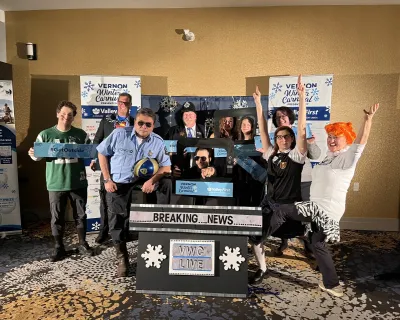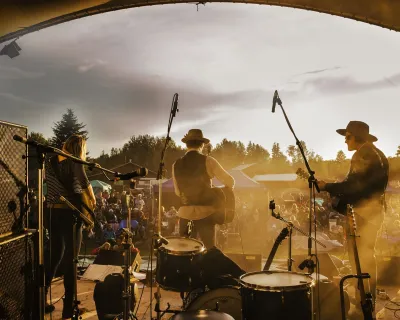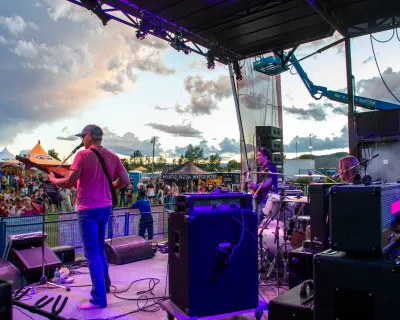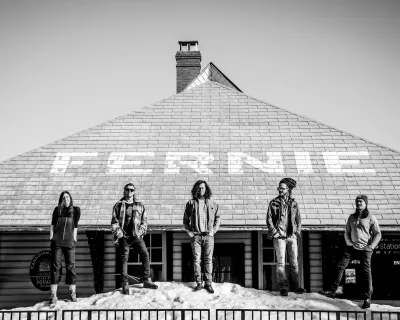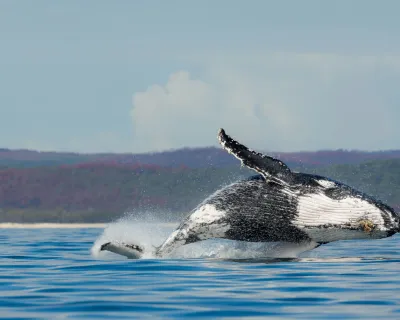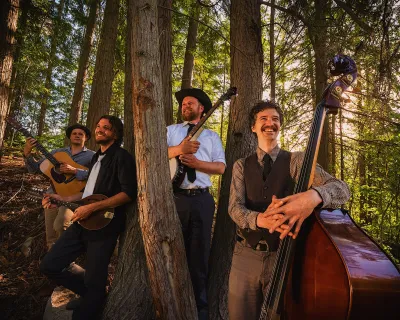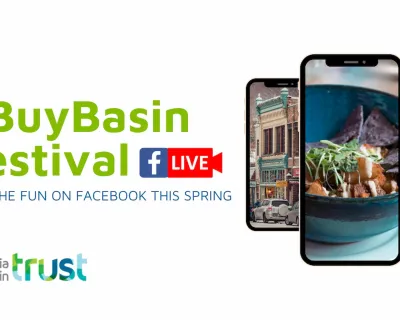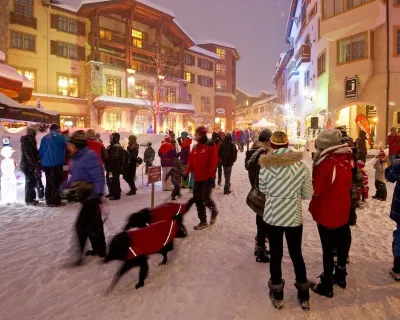Sharing my childhood days with my kids at the railway museum, Fort Steele and Sullivan mine proves these attractions never get old
DAVE QUINN
EAST KOOTENAYS - Growing up in the East Kootenays I spent my share of time at the local tourist attractions. I spent many nights on class sleepovers in the old Northwest Mounted Police Barracks at Fort Steele, and even performed in a few school plays at the old Wildhorse Theatre.
Help your friends #DareToExplore. Tweet this page.
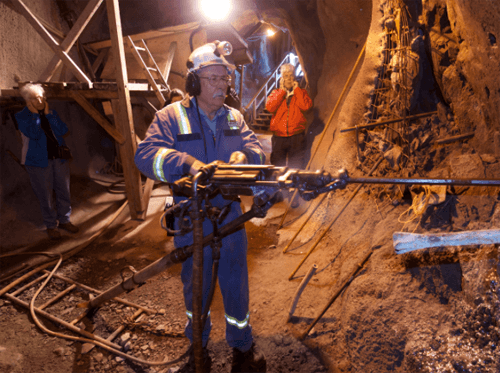
Retired miner and volunteer tour guide Gord Olsen demonstrates a pneumatic percussion drill.
Photos by Dave Quinn
I have lost track of the number of Cranbrook Railway Museum Tours I have been on, and was even almost famous as a kid in one of their brochures.
I was raised in Cranbrook, but spent a lot of time in Kimberley with my grandmother, and the last time I toured the town’s Sullivan Mine it was still active, and we actually got to blow up a boulder deep underground. Cool.
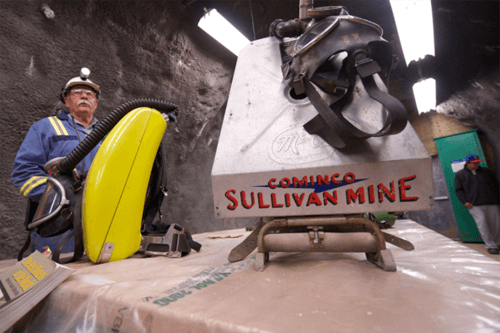
Retired miner and volunteer tour guide Gord Olsen talks mine safety behind an old underground breathing apparatus.
It was a powerful experience for me recently to rediscover these three attractions with my own kids, and see that while I might be a bit older and dustier, the Cranbrook History Centre, Fort Steele, and Kimberley’s Underground Mining Railway are all keeping pace with the times and definitely still have the cool, ‘I didn’t know that factor’ for kids and adults alike. Like Fort Steele on Facebook here.
The old Railway Museum has been reinvented as the Cranbrook History Center, and is about much more than just trains. Sure, it still has an unrivalled collection of professionally restored luxurious passenger rail cars built in the early 1900s (cars that carried the likes of Winston Churchill, Queen Elizabeth, and the Kennedys). Like the Cranbrook History Center on Facebook.
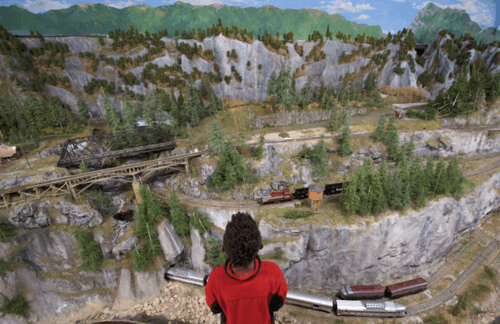
The Cranbrook History Center’s new ‘O’ gauge 11-metre long model of the Kettle and Fraser Valley railways includes bridges, trestles, spiral tunnels, and over 3,000 trees.
Of course, the Royal Alexandra Hall still stops visitors dead in their tracks with its jaw-dropping recreation of CPR excess. But these days everyone is talking about the centre’s new, free displays on everything from regional fossils and geology to native wildlife and local Ktunaxa First Nations culture.
But my kids (and my inner kid) think the coolest new exhibit by far is the 11-metre long ’O’ gauge scale model of both the Kettle and Fraser Valley Railways, alongside the ‘HO’ scale model railway of the old Cranbrook CPR station. Visitors can start up the engines and watch them crawl up steep grades, traverse old wooden trestles, and disappear into spiral tunnels.
Meanwhile, up the hill in Kimberley, the Underground Mining Railway keeps on hauling visitors from downtown to the ski hill and back, as well as into the darkness of a 230-metre tunnel to help people better understand the town’s raison d’etre, the Sullivan Mine. Like Kimberley's Underground Mining Railway on Facebook.
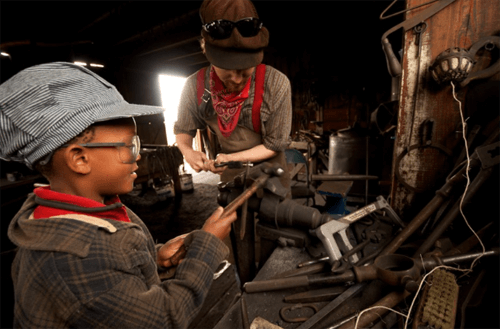
Seven-year-old Tumelo Quinn makes his own “Prairie Diamond” ring from a handmade iron nail, with help from Mr. Mcbain, Fort Steele’s blacksmith.
Hard-rock miner Gord Olsen spent “35 wonderful years” working underground at Kimberley’s Sullivan mine, the largest lead-zinc mine on the planet, which closed for good in 2001 after a century of production.
Gord explains everything about the 600-metre deep mine workings and the 480 kilometres of tunnels under the mountain. He showcases working muck drags, giant rock drills, power scoops, and ore carts, all powered by compressed air as they would have been in a real mine.
Throughout the tour of the underground mine, the old powerhouse, and a stretch of Mark Creek, Gord’s passion for the Sullivan and for Kimberley is infectious, and his dead-pan delivery has everyone laughing. We all get a real sense of why miners loved working at the Sullivan. Sure, the pay was great, but the real treasure of the mine was the miners themselves.
Just Northeast of Cranbrook, Fort Steele’s timeless attractions still include its working steam train, wagon rides behind a team of imposing Clydesdale draft horses, live drama at the Wildhorse Theatre, and working tinsmith, livery, bakery, and blacksmith. All under the towering visage of the Rocky Mountains.
Group photos in period costumes have always been a highlight, but the Fort has now moved into the age of moving pictures, and now we have our very own black-and-white family silent film produced, directed, edited, and emailed to us by the Great West Emporium.
Fort Steele has also opened up its archives to the public. We don white archival gloves to join a guide to pick up and feel everything from 1890s corsets and hats, to medicine, food, and even old-school (really old school) side saddles owned by the Fort’s original leading ladies.
My kids really like the Fort’s candy-stuffed general store, with record-breaking jaw-breakers, lollipops, and other retro sweets. So do I.
Some things never change.
If you go
Did you know the East Kootenay's are home to some fun festivals? Check out the Kootenay Rockies Gran Fondo this fall or Sam Steele Days in the spring.
For more information on the Kimberley Underground Mining Railway head to its official website.
Fort Steele is open for the summer season. Grab additonal information and start planning your trip here.
Ready to learn about the rich history in Cranbrook? Visit the Cranbrook History Center
Like this story? Share it with your friends.
